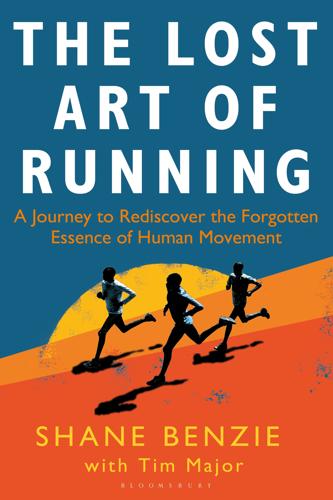
The Lost Art of Running: A Journey to Rediscover the Forgotten Essence of Human Movement
by
Shane Benzie
and
Tim Major
Published 19 Aug 2020
If you want to move efficiently and effectively, you need to make use of this natural elasticity. There is no better example of this than the work that I have done with Elisabet Barnes. Elisabet should need no introduction. She is a successful ultra-endurance runner, a two-times winner of Marathon des Sables, a coach and motivational speaker with an enviable record of success. Going into the Marathon des Sables in 2017, we worked specifically on Elisabet’s posture, ensuring that her perception of her movement was that of a graceful figurehead on the bow of a ship. I messaged her over the MdS messaging system every evening to reinforce this – simply writing the word ‘figurehead’ each time.
…
Having said that, with the competition that lined up next to her at the race, that still didn’t mean it was easy. Marathon des Sables, Morocco “She’s about 16 minutes ahead of you.” ‘My heart sank. It was as if my whole body crumbled. ‘“Thank you,” I mumbled as I passed the two competitors who had just conveyed that nugget of information that I really didn’t want to hear.’ It was late afternoon and the sun was beginning to set. It was the long stage of the gruelling Marathon des Sables and Elisabet had been going since 11 a.m. in mostly soft sand. It was over 40°C. She was beginning to tire. This stage was on the fourth day of the race, when competitors had already done 35–40km daily for three consecutive days, carrying a pack containing all of their gear and food for the entire week, sleeping in open tents with seven other people, and generally living a rather tough life in the barren and hot Sahara desert.
…
He has finished more than 1000 marathons, over 250 ultramarathons, held 9 separate Guinness World Records and once covered the 1275 miles from London to Lisbon in 43 days on foot, arriving in time for the European Championships football tournament in 2004. Rory also became a regular fixture at the Marathon des Sables (MdS) – with 15 finishes to his name – and coached and guided Sir Ranulph Fiennes during his successful attempt to complete the race. I first worked with Rory shortly before he went out to his 13th MdS. The next time we met was on a track in Bristol about a year later. It was clear that a lot had happened to him in the relatively short time in between.

Lonely Planet Morocco (Travel Guide)
by
Lonely Planet
,
Paul Clammer
and
Paula Hardy
Published 1 Jul 2014
(Click here) Eastern Atlas Barren, Martian-red mountains overlook the Ziz Gorges and the wedding-festival village of Imilchil. (Click here) (Click here) Prayer time, Marrakesh medina (Click here) TIME WHITE/GETTY IMAGES © Month by Month Top Events Fès Festival of World Sacred Music, June Festival of Popular Arts, July Marriage Moussem, September Marathon des Sables, March Riffian Trekking, April January Moroccan winter: the north is wet and snow makes many mountains impassable for trekkers and even motorists. Marrakesh and the south receive the most tourists, especially around New Year. Moussem of Sidi ben Aïssa One of Morocco’s largest moussems (festivals) takes place at the Sufi saint’s mausoleum, outside the Meknès medina walls.
…
Almond Blossom Festival A very pretty festival held in the Anti Atlas in spring, when the Tafraoute area is awash with blossoms. Traditionally about celebrating the harvest in Morocco’s almond capital, the festival is now also about local folklore, with singing, dancing, theatre and storytelling. (Click here) Marathon des Sables Starting and finishing in Morocco’s movie town, Ouarzazate, the Saharan ultramarathon is as epic as films made in ‘Ouallywood’. The gruelling six-day challenge, held in March or April, crosses 243km of desert. Water is provided. (Click here) April Springtime continues: the country is lush and green and temperatures are now reliably hot nationwide.
…
Ouarzazate Unlimited TOURS OFFLINE MAP GOOGLE MAP ( 0524 89 06 41; www.ouarzazate-unlimited.com; 6 Rue Du Marché) A reader-recommended provider delivering well-organised camel treks, 4WD desert tours and multi-city itineraries. Select accommodation includes midrange to top-end riads, kasbahs and camps. Festivals & Events The moussem of Sidi Daoud is held in Ouarzazate each August. Marathon des Sables SPORTS (www.marathondessables.co.uk) This gruelling six-day, 250km desert ultramarathon is held in March/April. The course changes each year, and is revealed when runners converge in Ouarzazate. Sleeping With the rapid growth of the city, Ouarzazate’s hotel scene is slowly evolving to offer a better selection of mid-priced B&Bs and maisons d’hôtes , alongside larger, tour-group-friendly hotels such as the Ibis and Kenzi Azghor, which cluster near the Taourirt Kasbah and along the Rte de Zagora.
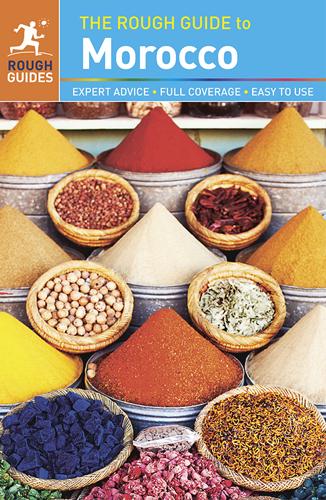
The Rough Guide to Morocco
by
Rough Guides
If you’re going to buy a rug, this is probably the best place to do so – there are numerous shops and a good cooperative, the Espace Zoukini, on Avenue Hassan II ( 0524 841028), whose attractive weaves are made by women from nearby villages. THE MARATHON DES SABLES A gruelling slog across 250km of barren hammada and scorching desert, the Marathon des Sables is generally acknowledged as the toughest foot race in the world. Runners are required to carry all their own equipment, including GPS (in 1994, Italian runner Mauro Prosperi spent nine days lost in the desert after getting caught in a sandstorm – he survived by drinking bats’ blood and was eventually found in Algeria, 300km off track) and the dozen litres of water they’ll consume during each of the six days it takes to complete the course.
…
The result is a fairly high standard of skill in the Moroccan league, but unfortunately Moroccan clubs are unable to afford the money commanded by top players in Europe, with the result that the best Moroccan players end up in European clubs. Other sports Morocco has two marathons: the Marrakesh Marathon and the even more gruelling Marathon des Sables. Most four-star and five-star hotels (especially in Agadir and Marrakesh) have tennis courts, though equipment, if available, is not often up to much, so you’re advised to bring your own racket and balls. Paragliding is increasingly popular in the south of Morocco, around Tafraoute and Mirhleft in particular, where there are thermals even during winter.
…
Founded by a Frenchman, Patrick Bauer, in 1986, the race takes place in March or April, and today attracts around nine hundred runners each year, 250 or so from the UK, from a surprisingly broad range of demographics; in 2012, the French runner Joseph Le Louarn completed his sixth Marathon des Sables at the ripe old age of eighty. The constantly changing route has recently included places such as Foum Zguid and Merzouga. For further information, see darbaroud.com; UK runners interested in competing should contact Running Sahara ( runningsahara.com). ARRIVAL AND INFORMATION: WEST OF THE DRÂA FOUM ZGUID By bus Buses run from the centre of Foum Zguid to Tazenakht (3 daily; 1hr 30min), Tata (2 daily; 2hr 30min) and Zagora (2 daily; 3–4hr), among other destinations.
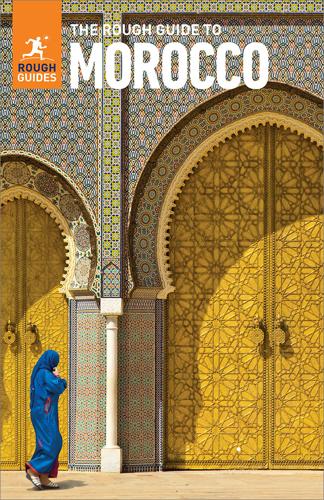
The Rough Guide to Morocco (Travel Guide eBook)
by
Rough Guides
Published 23 Mar 2019
Beyond both, roads run into the heart of the Atlas, a wonderful (and, from Tinghir, fairly easy) trip that emerges near Beni Mellal in the Middle Atlas. To the south of the Dadès, the volcanic rock and limestone pinnacles of the Jebel Saghro offers exciting options, either on foot or on its network of rough piste roads in a 4WD. The Marathon des Sables A gruelling slog across 250km of barren hammada and scorching desert, the Marathon des Sables is generally acknowledged as the toughest foot race in the world. Runners are required to carry all their own equipment, including GPS (in 1994, Italian runner Mauro Prosperi spent nine days lost in the desert after getting caught in a sandstorm – he survived by drinking bats’ blood and was eventually found in Algeria, 300km off track) and the dozen litres of water they’ll consume during each of the six days it takes to complete the course.
…
The result is a fairly high standard of skill in the Moroccan league, but unfortunately Moroccan clubs are unable to afford the money commanded by top players in Europe, with the result that the best Moroccan players end up in European clubs. Other sports Morocco has two marathons: the Marrakesh Marathon and the even more gruelling Marathon des Sables. Most four-star and five-star hotels (especially in Agadir and Marrakesh) have tennis courts, though equipment, if available, is not often up to much, so you’re advised to bring your own racket and balls. Paragliding is increasingly popular in the south of Morocco, around Tafraoute and Mirhleft in particular, where there are thermals even during winter.
…
Runners are required to carry all their own equipment, including GPS (in 1994, Italian runner Mauro Prosperi spent nine days lost in the desert after getting caught in a sandstorm – he survived by drinking bats’ blood and was eventually found in Algeria, 300km off track) and the dozen litres of water they’ll consume during each of the six days it takes to complete the course. Founded by a Frenchman, Patrick Bauer, in 1986, the race takes place in March or April, and today attracts around nine hundred runners each year, 250 or so from the UK, from a surprisingly broad range of demographics; in 2012, the French runner Joseph Le Louarn completed his sixth Marathon des Sables at the ripe old age of 78. The constantly changing route has recently included places such as Foum Zguid and Merzouga, although competitors stay overnight in bivouac villages. For further information, see marathondessables.com; UK runners interested in competing should visit marathondessables.co.uk).

Jellyfish Age Backwards: Nature's Secrets to Longevity
by
Nicklas Brendborg
Published 17 Jan 2023
However, as exercise works by hormesis, it is also clear that there must be a ceiling somewhere: some tipping point where the stress factor becomes too big. The question is whether that ceiling for exercise is anything normal people like you and I should worry about. In other words, whether you bump into it hobby-jogging a few times a week, or whether it is only applicable if you try out Race Across America or Marathon des Sables. According to the study from Cleveland, we have nothing to worry about. Even the most active participants fared well, and we can safely live by the rule that more exercise is better. But obviously, this is one of those things where you have to listen to your body. Remember that exercise is healthy because of all the things that happen while you recover.
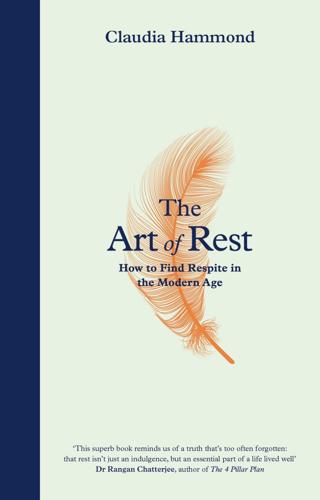
The Art of Rest: How to Find Respite in the Modern Age
by
Claudia Hammond
Published 5 Dec 2019
A senior executive who’s an endurance runner in his spare time once told me if you keep repeating this mantra you can keep going for mile after mile after mile. Far further than you might think possible. One foot in front of the other. If you just keep swinging your legs, he said, there’s no stopping you. He used the phrase to motivate himself to run all night across rocky sand dunes in Morocco when he took part in the Marathon de Sables. The name implies one marathon – 26 miles, 385 yards – but, in fact, it involves completing six marathons in a row. Those who drop out halfway through (the lightweights) are termed ‘abandoned’ and have to wear green armbands to mark them out at the cluster points. Despite the embarrassment, they might at least be glad of the chance to rest, I thought, but no, he tells me, they’re beyond gutted.
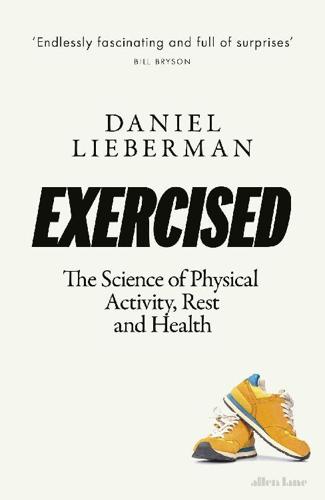
Exercised: The Science of Physical Activity, Rest and Health
by
Daniel Lieberman
Published 2 Sep 2020
As a child, I had no idea how inspirational it was to have a heroic mother who liberated a gym by running, and how fortunate I was that both my mother and my father jogged regularly and took me on innumerable hiking trips to the mountains every summer, sometimes for the entire summer. I was never good at sports, but thanks to my parents I grew up thinking it was necessary, normal, and fun to be physically active. Notes PROLOGUE 1. Oxford English Dictionary (2016). 2. Cregan-Reid, V. (2016), Footnotes: How Running Makes Us Human (London: Ebury Press). 3. Marathon des Sables, www.marathondessables.com. 4. No, I didn’t make this up. Hats off to John Oliver, who used this example in his brilliant, funny critique of science journalism: www.youtube.com/watch?v=0Rnq1NpHdmw. The paper in question was Dolinsky, V. W., et al. (2012), “Improvements in skeletal muscle strength and cardiac function induced by resveratrol during exercise training contribute to enhanced exercise performance in rats,” Journal of Physiology 590:2783–99.

Lonely Planet Peru
by
Lonely Planet
Making up for lost time, he’s since squeezed 70 countries into a sometimes precarious existence as a writer and professional vagabond. His rocking-chair memories will probably include staging a performance of A Comedy of Errors at a school in war-torn Angola and running 150 miles across the Sahara Desert in the Marathon des Sable. In the last 11 years, he has written over 40 books for Lonely Planet, covering everything from Castro’s Cuba to the canyons of Peru. Alex Egerton North Coast, South Coast A news journalist by trade, Alex has worked for magazines, newspapers and media outlets on five continents. He spends most of his time on the road checking under mattresses, sampling suspicious street food and chatting with locals as part of the research process for travel articles and guidebooks.